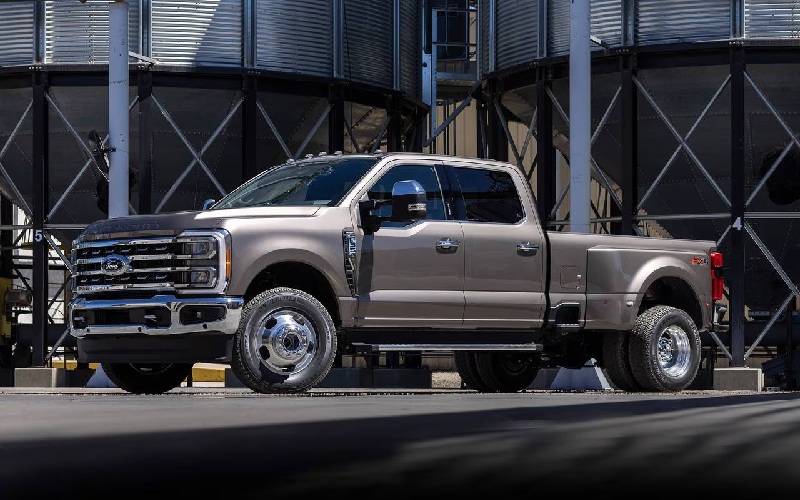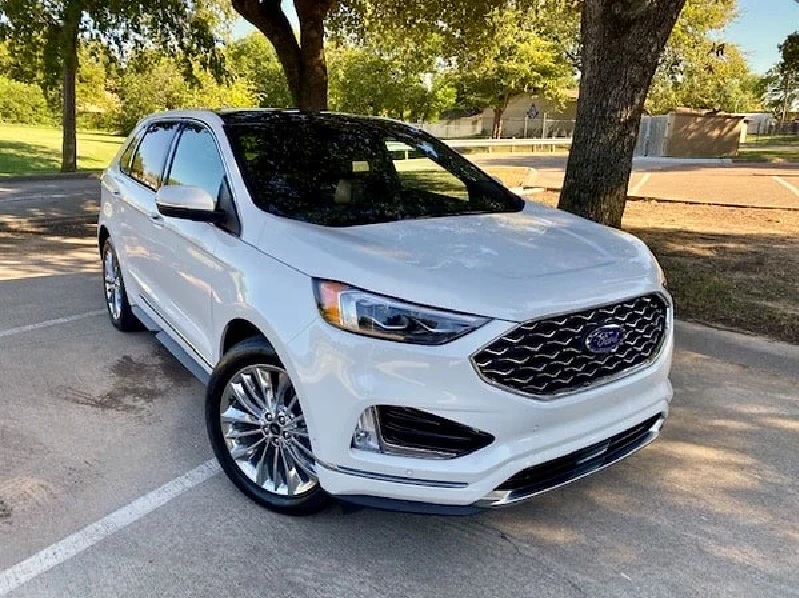What is the Difference between Ford OEM Parts and Unbranded?
The difference between Ford Original Equipment Manufacturer (OEM) parts and unbranded alternatives represents a crucial consideration for vehicle owners seeking to maintain optimal performance and reliability. This comprehensive analysis examines the fundamental distinctions, manufacturing standards, performance impacts, and long-term implications of choosing between these two options. Understanding these differences allows for informed decisions that directly […]
The difference between Ford Original Equipment Manufacturer (OEM) parts and unbranded alternatives represents a crucial consideration for vehicle owners seeking to maintain optimal performance and reliability. This comprehensive analysis examines the fundamental distinctions, manufacturing standards, performance impacts, and long-term implications of choosing between these two options. Understanding these differences allows for informed decisions that directly impact a vehicle’s functionality, safety, and longevity.

Manufacturing Standards and Quality Control
Ford OEM parts undergo rigorous design and manufacturing processes specifically tailored to the exact specifications of each vehicle model. These components are manufactured either directly by Ford or by suppliers contracted to produce parts according to precise Ford engineering standards. The production processes include extensive quality assurance measures at multiple stages, from raw material selection through final testing.
Every Original Equipment Manufacturer component must satisfy comprehensive Ford testing protocols, which typically exceed minimum industry requirements. These protocols involve thermal cycling, vibration analysis, environmental exposure testing, and extensive durability evaluations. For critical safety systems, testing often includes simulated crash scenarios and extreme condition performance assessments.
In contrast, unbranded parts are produced by independent manufacturers without direct access to proprietary designs and engineering specifications. While many aftermarket manufacturers attempt to reverse-engineer OEM parts, they lack access to the original design parameters and material specifications. Quality control standards vary significantly between unbranded manufacturers, with some implementing robust testing protocols while others perform only basic functionality checks.
The material composition of OEM parts adheres strictly to Ford engineering requirements. For example, Ford brake rotors utilize specific high-carbon iron formulations with precisely controlled metallurgical properties to ensure optimal heat dissipation and wear characteristics. Unbranded alternatives may substitute less expensive materials that approximate but do not match these specifications, potentially compromising performance under extreme conditions.
Precision Engineering and Fitment
Ford OEM parts provide exact dimensional specifications to ensure perfect fitment across all production variables. These components are manufactured using the same tooling and production equipment as the original parts installed during vehicle assembly. This precision eliminates the need for modifications or adjustments during installation and maintains the original engineering tolerances.
The 2025 F-150’s complex electrical system components illustrate this precision requirement. Sensors and electronic modules include vehicle-specific programming and calibration parameters that ensure seamless integration with the truck’s central computer systems. These calibrations account for minute variations in manufacturing tolerances across different production batches, ensuring consistent performance.
Unbranded alternatives typically offer more generalized fitment, designed to be compatible with multiple vehicle models or production years. This approach necessarily involves design compromises that may result in less precise installation, potential clearance issues, or the need for modifications during installation. While many unbranded parts provide adequate functionality, achieving OEM-level precision requires significant additional engineering investment that most aftermarket manufacturers cannot economically justify.
For body panels and aesthetic components, these fitment discrepancies become particularly evident. OEM body parts maintain the exact dimensions and mounting points of the original components, preserving gap tolerances as small as 3.5 millimetres between adjacent panels. Unbranded alternatives typically exhibit variations of 1-3 millimetres from these specifications, resulting in visible alignment issues and potential water or dust infiltration.
Performance Implications and System Integration
The performance impact of Original Equipment Manufacturer versus unbranded parts extends beyond individual component functionality to overall system integration. Ford engineers design vehicle systems holistically, with each component calibrated to work in concert with related parts. This systems-based approach ensures optimal performance under all operating conditions while maintaining appropriate safety margins.
The 2024 Escape Hybrid regenerative braking system demonstrates this integration requirement. The OEM brake pads feature specific friction coefficients and heat dissipation characteristics that complement the regenerative system’s operation. These pads maintain consistent performance as they transition between regenerative and mechanical braking modes. Unbranded alternatives may provide adequate braking force but typically lack the precise friction characteristics required for seamless integration with the regenerative system, potentially reducing efficiency and increasing wear on other components.
Similarly, engine management systems depend on precise sensor readings to optimize performance. OEM oxygen sensors provide accuracy within 0.01 volts and response times measured in milliseconds. Aftermarket alternatives may deliver signals within the functional range but often exhibit response delays or calibration shifts that cause the engine computer to make continuous adjustments, potentially affecting fuel efficiency and emissions performance.
Suspension components further highlight these integration considerations. The 2023 Explorer OEM shock absorbers feature specific damping curves matched to the vehicle’s spring rates, sway bar stiffness, and chassis dynamics. This calibration provides the intended balance between handling precision and ride comfort. Unbranded alternatives may offer comparable damping rates but typically lack the specific force-velocity curves engineered for each specific model configuration.
Durability and Longevity Factors
Long-term durability represents one of the most significant differences between OEM and unbranded parts. Ford Original Equipment Manufacturer components undergo extensive validation testing to ensure they meet or exceed the vehicle’s intended service life under varied operating conditions. This testing includes accelerated aging protocols that simulate years of use in compressed timeframes.
Ford drivetrain components demonstrate these durability differences clearly. OEM clutch assemblies for the Ranger undergo thermal cycling tests that simulate 240,000 kilometres of mixed driving conditions, including frequent towing scenarios. The resulting designs incorporate specific material selections and heat treatment processes to maintain consistent performance throughout this service life. Unbranded alternatives typically target 60-70% of this durability standard, representing a significant longevity compromise.
Environmental resilience further distinguishes OEM parts, particularly for external components exposed to harsh conditions. Ford OEM exterior trim pieces undergo 3,000 hours of accelerated weathering tests, simulating approximately 10 years of sun exposure and temperature cycling. These components utilize UV-stabilized polymers with precisely controlled additive packages to prevent deterioration. Unbranded alternatives often employ standard commercial-grade plastics with less comprehensive stabilizer formulations, potentially leading to premature fading, brittleness, or deformation.
Corrosion protection on metal components follows similar patterns. Underbody components receive multi-layer protection systems including zinc-rich primers, conversion coatings, and specialized topcoats designed to withstand specific regional environmental challenges. Unbranded alternatives typically employ more standardized coating systems that may provide adequate initial protection but often lack the specialized formulations required for long-term durability in challenging environments.
Warranty Considerations and Support Systems
Ford OEM parts include comprehensive warranty coverage that integrates with the vehicle’s overall warranty framework. These parts typically carry coverage for 24 months with unlimited kilometres when purchased through authorized dealers. More significantly, Original Equipment Manufacturer parts installations preserve the validity of remaining vehicle warranty coverage on related systems.
The warranty implications extend beyond the individual component to potential consequential damage. If an OEM part fails within the warranty period, Ford coverage extends to repairing any additional damage caused by that failure. This comprehensive approach provides significant financial protection for complex, interconnected systems where a single component failure might affect multiple related parts.
Unbranded parts typically offer more limited warranty terms, often covering replacement of the specific component but excluding labour costs or consequential damage. The warranty administration process also differs substantially, with consumers often required to manage the claim process directly rather than through an established dealer service department.
Beyond formal warranty coverage, the Ford technical support infrastructure provides additional value for OEM parts. Service information, technical bulletins, and installation guidelines are readily available to technicians working with OEM components. This support system includes detailed torque specifications, calibration procedures, and troubleshooting protocols specific to each component. Unbranded parts typically include basic installation instructions but offer more limited technical support resources.
Value Proposition and Long-Term Ownership Cost
The overall value equation extends beyond initial purchase cost to include installation efficiency, durability, system performance, and resale impact. While unbranded parts typically offer lower upfront costs, the comprehensive analysis must consider these additional factors to assess true ownership costs.
Installation efficiency significantly impacts total cost, particularly for complex components. OEM parts designed with precise fitment typically require less installation time and reduce the likelihood of additional complications. This efficiency advantage becomes particularly evident with components requiring calibration or programming. OEM electronic modules often integrate seamlessly with dealer diagnostic systems, while unbranded alternatives may require additional programming steps or parameter adjustments.
Vehicle resale value represents another significant consideration in the value equation. Market data consistently shows that vehicles maintained with documented OEM part installations command premium values in the resale market. This premium ranges from 4-8% for mainstream models and can exceed 12% for premium models with comprehensive service documentation.
For vehicles within the original warranty period, maintaining OEM part usage preserves the transferable warranty coverage, providing additional value to subsequent owners. This consideration becomes particularly significant for powertrain components covered under the longer-term Ford warranties, where proper documentation of OEM maintenance can represent substantial value to prospective buyers.
Five Ford OEM Part Facts
- Ford maintains a “parts archive” where examples of original components for heritage models are preserved. This collection includes over 60,000 individual parts, with some dating back to the Model T era, allowing for accurate reproduction of replacement parts for classic vehicles.
- The 2024 Mustang’s brake callipers undergo a 10-stage painting process that includes electrostatic application and infrared curing to ensure the signature red finish maintains its appearance for over 160,000 kilometres of exposure to brake dust and road debris.
- Ford OEM windshields contain embedded optical-grade antenna elements that are precisely calibrated to receive specific radio and cellular frequencies while remaining virtually invisible. Most unbranded replacements use more visible wire elements or separate antenna modules.
- The F-150 aluminum body panels incorporate a proprietary self-healing coating technology that allows minor scratches in the clear coat to flow and repair themselves when exposed to moderate heat, such as summer sunshine.
- Ford employs acoustic engineers who specialize exclusively in designing OEM exhaust systems that produce specific sound profiles. These engineers use advanced harmonic analysis to create the distinctive engine notes associated with performance models like the Mustang GT and F-150 Raptor.
Questions and Answers About Ford OEM Parts
How can I identify genuine Ford OEM parts to avoid counterfeits?
- Genuine parts feature several security elements, including holographic logos on packaging, unique part number formats that follow a standardized system, and security codes that can be verified through the Ford parts department. Most components also feature the logo or part number molded or stamped directly on the part itself. For electronic components, genuine parts will register correctly when scanned with Ford diagnostic equipment.
Do all Ford dealers exclusively use OEM parts for repairs?
- Authorized dealers use genuine parts for all warranty repairs and typically recommend them for post-warranty service. However, customers can request alternative parts for out-of-warranty repairs. For collision repairs, dealers work with insurance companies who may specify genuine or alternative parts based on policy terms.
Will using unbranded parts void my vehicle warranty?
- Using unbranded parts does not automatically void the entire vehicle warranty. However, if an unbranded part causes or contributes to a failure, Ford may deny warranty coverage for that specific repair and any consequential damage. The onus falls on Ford to demonstrate the connection between the aftermarket part and the failure. Critical systems like emissions controls are more strictly regulated, and modifications with unbranded parts may affect compliance-related warranty coverage.
Are there performance advantages to upgrading beyond OEM specifications?
- For certain applications, specialty aftermarket parts can offer performance advantages over genuine components. These typically involve trade-offs, such as performance brake pads that improve stopping power but may increase noise or dust. Legitimate performance upgrades are designed with comprehensive engineering rather than simply altering a single specification. Performance parts offer factory-engineered upgrades that maintain system integration while improving specific performance parameters.
How do Ford OEM parts address regional climate differences?
- Ford engineers region-specific variations of many components to address local environmental conditions. These include different cooling system components for hot climates, enhanced corrosion protection for coastal areas, and specific battery formulations for extreme cold regions. These variations often share the same part number but include suffix codes that identify their regional specification. Most unbranded alternatives offer standardized designs without these regional optimizations.
*Disclaimer: Content contained in this post is for informational purposes only and may include features and options from US or international models. Please contact the dealership for more information or to confirm vehicle, feature availability.*


